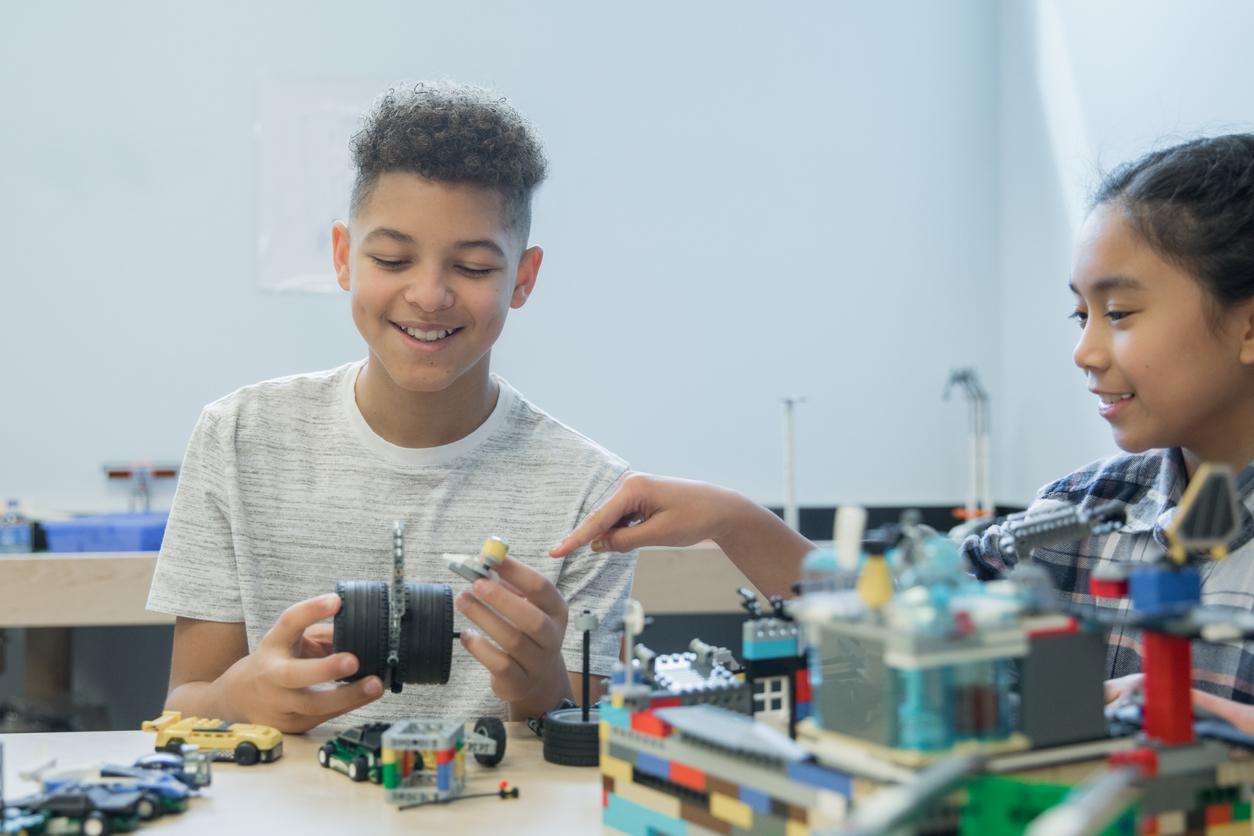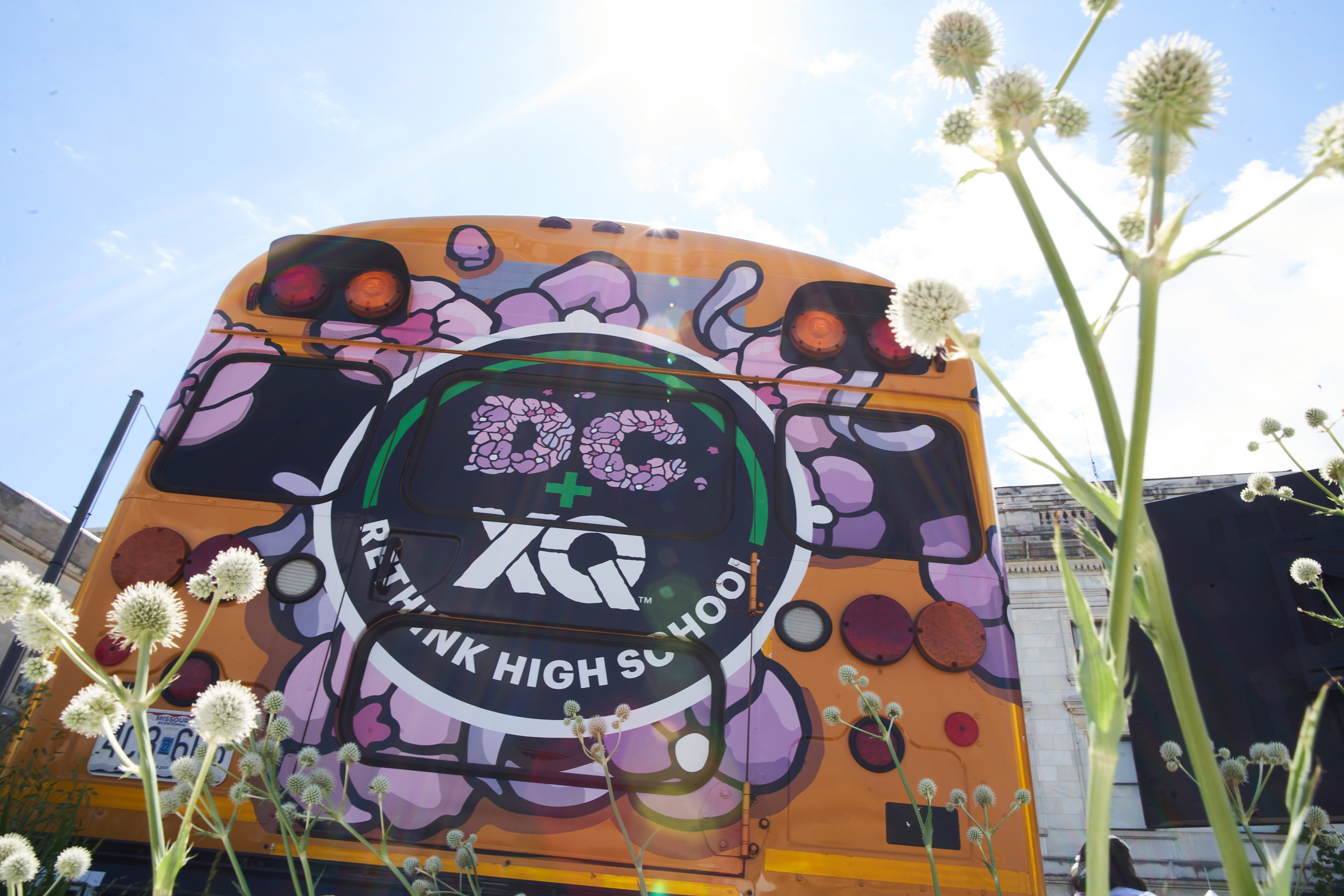What Is a Makerspace? A Guide for Teachers
Makerspaces help students gain creativity and problem solving skills. Here's where to start if you want to bring one to your school.

Technology has always played a role in schools. From pencils, paper, and chalkboards to computers, tablets, and smartboards. More recently, a growing number of schools, libraries, and public places have begun to create spaces where students can learn through making.
The tools they use can be high-tech (e.g., 3D printing, 3D modeling, coding, robotics) or low-tech (e.g., LEGOs, woodworking, art supplies), but these “makerspaces” are designed to help students learn to collaborate, think critically about complex problems, design creative solutions to challenges, and share knowledge.
Why Make?
At the heart of a makerspace is the idea that students have the opportunity and space to construct a manifestation of their understanding (Harel & Papert, 1991). According to a 2018 Project Tomorrow survey, parents, district administrators, and members of the community see makerspaces as valuable for college and career readiness.
In fact, School library/media specialists report that the top five benefits of makerspaces for student learning include:
- Developing creativity skills (81 percent)
- Developing critical thinking and problem-solving skills (80 percent)
- Applying knowledge to practical problems (78 percent)
- Collaborating with other students more
- Gaining confidence in their abilities
For a school in Henry County, Georgia, creating a makerspace was a move specifically to give students more agency and make learning more authentic, and the makerspace became a core element of the school’s project-based learning efforts.
How to Start a Makerspace
Makerspace is a daily class taken by each student at Locust Grove. The class was created in conjunction with house projects, real-world applications of content, to help make learning more relevant for students and allow them to better understand possible future career pathways in high school and beyond. Previously, Locust Grove provided classes focused on areas of professional interest related to career pathways such as engineering, coding, design, and culinary arts.
These popular classes were structured as electives, but often would fill up and many students were not able to select their top choice. In hopes of improving student choice and agency, Locust Grove decided to flip this approach by allowing all students to pursue their top choice and designing the makerspace class to support these choices.
Driving Questions
Locust Grove students meet in their makerspace class for approximately 45 minutes a day to work on their house projects. Makerspace teachers design driving questions for projects, which are intentionally broad so students can select from a wide array of projects to answer the driving questions (or create their own).
The broad driving question within each house is as follows:
- Community and Commerce: How can we, as the Community and Commerce House, positively articulate and demonstrate how conflict can lead to change?
- Center Stage: How can I use my strengths to impact the world in a positive way through a storytelling experience?
- Cultivating Wellness: How can we improve the quality of life for people living in our community and around the world?
- House of Design: How can we, as designers, develop a product to improve our community?
The project work is student-driven, and the teacher’s role is to monitor progress and provide support as needed. The classroom is a large, open space created by knocking down a wall between two classes. It contains a multitude of unique learning resources (3D printer, grow lights, etc.) that students can use to fulfill their project requirements.
Here are more examples of makerspaces in action:
Creating a Makerspace to Promote Project-Based Learning at Locust Grove School (Video)
Class Example: House Projects at Locust Grove (Video)
Key Roles To Consider
If you are thinking about creating a makerspace in your middle or high school to support project-based learning, keep in mind these specific roles and actions for each key player:
Student Does
- Selects project, or creates their own, based on interest.
- Chooses who they want to work with on their project, based on similar interests, or works individually.
- Collaborates on their project with their group (if applicable).
- Manages their project, including creating a justification for why it is important and how it relates to content areas, a timeline, and a presentation to an authentic audience.
- Learns 21st-century skills by applying technology tools to help complete and present their project.
Teacher Does
- Designs driving questions, objectives, tasks, and pathways for different house projects, relating them back to content areas.
- Meets with students at least once a week, helping them plan projects and stay on track to complete them.
- Communicates with students throughout the week as needed.
- Grades projects on 21st-century skills and any content areas the project is tied to.
Technology Does
- Serves as a tool to complete projects (virtual reality, 3D printing, video recording and editing, etc.).
- Helps students practice 21st-century skills.
- Helps students and teachers communicate throughout the week via email and Google classroom.
Need more inspiration on how to foster a meaningful, engaging learning experience? Check out the XQ Learner Goals (includes printable posters).









